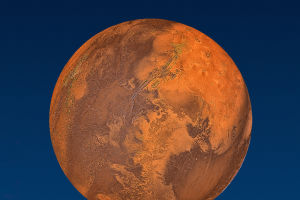The Milky Way is a milky white band that stretches across the starry sky. It intersects with the celestial equator in the constellation Aquila, in the northern hemisphere.
The Milky Way traces a band of varying width on the celestial sphere, known as the Milky Way band, which can reach up to 30° at its widest point and as narrow as 4° to 5°, with an average of about 20°. This is just a part of the Milky Way galaxy.
Visible only on clear nights, the Milky Way is caused by the light of countless dim stars. The Milky Way is not the Milky Way galaxy but rather a part of it.
The Milky Way galaxy (formerly known as the Milky Way, the Celestial River, the Star River, the Heavenly River, the Milky River, etc.) is a barred spiral galaxy containing the solar system, with a diameter ranging from 100,000 light-years to 180,000 light-years. It is estimated to contain between 100 billion and 400 billion stars, with possibly 100 billion planets.
The distance from the solar system to the center of the Milky Way is about 26,000 light-years, located in a region with dense gas and dust known as the inner edge of the Orion Arm, one of the spiral arms. At the position of the Sun, the orbital period is approximately 240 million years. From Earth's perspective, as it is viewed from within the disk-shaped structure, the Milky Way appears as a band encircling the celestial sphere.
The central region of the Milky Way is mostly composed of older stars (mainly white dwarfs), while the outer regions are mostly composed of newly formed and young stars. Within several hundred thousand light-years of its vicinity, there are dozens of satellite galaxies, and the Milky Way continues to grow by slowly devouring surrounding dwarf galaxies.
The Milky Way does not directly attract surrounding hydrogen gas through gravity; rather, this "stealing behavior" of the Milky Way resembles more of a scam than a robbery. According to West Virginia's Green Bank Radio Observatory, this predatory behavior occurs between a greedy cosmic bully and vast amounts of disappearing hydrogen gas. This bully is the Milky Way galaxy we inhabit, and these gases were originally from nearby dwarf galaxies but now belong to the bully.
"Astronomers have speculated whether nearby dwarf galaxies, through billions of years of interaction, would have the same material necessary for star formation as more distant dwarf galaxies," said astronomer Kristine Spekkens from the Royal Canadian Institute in a recent interview.
The answer is no; they would not have the same composition.
Spekkens and her colleagues found that the small galaxies around the Milky Way completely lack the hydrogen gas needed for star formation. As the largest member of a group of galaxies, the Milky Way's gravity not only causes other galaxies to gather together but also loots the gas from these dwarf spheroidal galaxies.
Beyond a clear rupture zone about 1,000 light-years from the edge of the Milky Way, irregular galaxies are surrounded by hydrogen-rich regions.
"The findings reveal many questions about the size of the hot halo and how companion galaxies orbit the Milky Way," Spekkens concluded.
The latest detailed radio telescope readings from the Green Bank Radio Observatory of the National Science Foundation in West Virginia enabled researchers to draw these conclusions.
The Milky Way does not directly attract surrounding hydrogen gas through gravity; compared to robbery, this "stealing behavior" of the Milky Way is more like a Ponzi scheme - slowly gathering them together and then silently robbing them.
Researchers describe the Milky Way's dense gravitational halo as a scorching plasma disk, and the pressure from it, combined with the orbital rotation of the dwarf galaxies, leads to the detachment of hydrogen, rendering them incapable of forming new stars.
"These findings shed light on many questions about the size of the hot halo and how companion galaxies orbit the Milky Way," Spekkens summarized.

